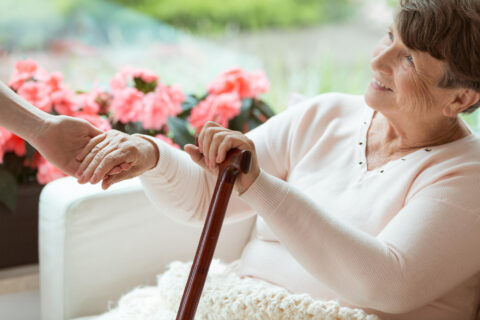Definition and Symptoms of Social Anxiety
Social anxiety vs agoraphobia are associated with fear; however, the fear that each manifests relates to different scenarios and situations. The Diagnostic and Statistical Manual of Mental Disorders (DSM) describes social anxiety disorder (also known as social phobia) as the overwhelming fear of being scrutinized. People with social anxiety disorder fear routine encounters—such as meetings, placing an order in a cafeteria, and interactions with strangers—because of potential negative criticism.
The key indicators of social anxiety disorder include a racing heart, excessive perspiration, trembling and shaking, blushing, and being nauseated with social interaction. Self-consciousness is a major contributing component of social anxiety, and the constant racing of thoughts leads to a breakdown. Social anxiety disorder is different from simple shyness, as shyness does not restrict an individual from actively participating in social situations.
The social component of social anxiety disorder is triggered by fear of social assessment, and agoraphobia is caused by fear of the environment. The difference is subtle, but it is critical to the approach in managing the conditions and treatment.
Definition and Symptoms of Agoraphobia
Agoraphobia is defined primarily by the fear of situations where a person feels escape is impossible, or it is an instance where an individual feels a panic attack or severe anxiety episode is happening. It is commonly mistaken to define agoraphobia as simply the ‘fear of open spaces’, but it is important to realize that it is much more than that.
A person diagnosed with agoraphobia can fear and avoid open crowds, public transportation or maybe even not stepping out of a house with a secured person. These individuals may experience anxiety as a result of being in situations that they deem as risky, unpredictable or uncontrollable. In the most severe cases, the individual may even confine themselves to a house and depend on other people to provide them with their basic needs.
People with panic disorders do tend to have agoraphobia, but not always a person who has panic disorders will also have agoraphobia. In social anxiety vs agoraphobia comparison, the most important distinction is present fear of social situations as opposed to fear of situations that can cause a person to get hurt.
Common agoraphobia symptoms include fear of losing control, feeling of being trapped, chest pain, and breathlessness. These may cause the person extreme fear and distress and may resemble a life threatening problem.
Comparing the Causes of Social Anxiety and Agoraphobia
Social anxiety and agoraphobia are two anxiety disorders that are distinct in their triggers but share the same underlying causes, including genetics, personality traits, and experiences during childhood. Even if social anxiety and agoraphobia are experienced together, having anxiety disorders in the family helps to identify and treat the condition.
The social anxiety causes have a particular focus on childhood experiences that may include social rejection, being bullied, and having a parent that is overly critical. Internalizing these experiences can lead an individual to believe that other people are evaluating and judging them in social circumstances, socially reinforcing the fear and anxiety.
After the experience of a panic attack, the person that develops agoraphobia starts associating particular physical spaces with the panic and begins avoiding them until the fear of a panic attack dominates the person. The social anxiety symptoms and the agoraphobia symptoms can co-exist on a continuum of anxiety that is socially driven. Self-perception and the fear of strangers define social anxiety, while agoraphobia describes a loss of control in physical spaces.
Impact on Daily Life and Relationships
Both social and agoraphobic anxiety disorders can quietly eat away at a person’s quality of life. Those with social anxiety are more likely to have issues with their relationships because of self-doubt and interaction avoidance. Even ordinary outings can become distressing when social gatherings, chances to move up at work, or other situations become opportunities to avoid. Isolation can spiral into depression, deeper loneliness, and a damaging sense of worthlessness.
Comparing social anxiety with agoraphobia, the effects of agoraphobia are typically more physical. People can become stuck in “safe zones” and are unable to go to important meetings or appointments. This kind of isolation can cause one to rely on family or friends for everyday tasks and activities, which can become a burden on those relationships.
The common thread in both disorders is avoidance. Whether it’s people or places, the ability to live life fully is diminished. This kind of avoidance can increase anxiety over time, and the person’s fears become harder to tackle. Thankfully, there are strategies and treatments available to help a person regain their life.
Treatment Options for Social Anxiety and Agoraphobia
Handling anxiety starts with uncovering its core issues and developing strategies for addressing the root causes of fear. For both conditions professionally guided treatments may include counseling focused on the use of medication or both. For the anxiety induced disorders the still widely recognized effective treatment remains Cognitive Behavioral Therapy or CBT for short.
Within the context of Social Anxiety versus Agoraphobia, CBT encourages the client to focus on their irrational fears and helps them construct a rational and reality based thought to replace it. In the area of Social Anxiety, the therapist focuses on the client’s communication skills, encourages the client to work on their perfectionist thinking, and helps the client build confidence through gradual exposure to the client in social settings.
For those suffering Agoraphobia, exposure therapy becomes the most important and first step. Therapy includes safely and steadily guiding the client to where the fears will be challenged until they are able to independently face it on their own. SSRIs or Selective Serotonin Reuptake Inhibitors may be prescribed as medications to stabilize mood and ease anxiety in conjunction with exposure therapy.
Other forms of therapy like or coupled with Mindfulness therapy helps ease the recovery period. This includes teaching participants how to remain grounded in a moment of anxiety while promoting feelings of connection. It helps to ease the anxiety and suffering of individuals. The aid of resources available to those suffering are important to seek and recommend the suffering person to experience them. It has shown to greatly improve the suffering experience as well as their quality of life.
Coping Strategies and Tips
Self-help strategies are essential for long-term management. Positive coping strategies foster resilience and lessen the effects of anxiety.
For people with social anxiety and agoraphobia, mindfulness strategies such as deep breathing, meditation, and progressive muscle relaxation are all effective. These strategies decrease physiological anxiety and help people stay in the moment. Exercising regularly helps with mood and the regulation of stress hormones.
Another effective method is setting small, manageable goals. For social anxiety, this could mean conversing with coworkers or going to a small gathering. For agoraphobia, this could mean going for short walks outside or going for brief walks. Achieving these small goals builds confidence and control.
Peer support groups provide social connection and help decrease isolation, as people within the groups tend to share similar experiences and understand the same struggles. Other ways to help with emotional regulation and provide stability are journaling, nutrition, and sleep.
Healing with agoraphobia and social anxiety is a process. It requires patience and, most importantly, consistency. It is possible to encourage a person with more control and connection in their life.
Frequently Asked Questions Regarding Both Conditions
Is social anxiety the same as agoraphobia?
No, they are distinct conditions. Social anxiety revolves around the fear of being judged or embarrassed in social situations, while agoraphobia involves fear of the situations where one cannot escape from, or there is no help during a panic episode.
Can a person have both disorders?
Yes, they can occur together, and a person can fear social judgment while also avoiding certain places because of panic disorder. Integrated treatment approaches are common in such scenarios.
How are these disorders diagnosed?
Mental health professionals have a variety of methods, from patient interviews to completing psychological assessments, which is ultimately meant for accurate diagnosis to ensure the treatment will meet the patient’s specific needs.
Do medications help with both disorders?
Yes, medications, including some SSRIs and other prescriptions for anxiety, can help reduce the negative symptoms. However, both social anxiety and agoraphobia mostly require psychotherapy as the main treatment.
Can lifestyle changes really make a difference?
Yes they do. Eating a balanced diet, getting enough sleep, exercising, and even some mindfulness practices can help dramatically diminish the symptoms of anxiety and improve one’s mood.
What’s the prognosis for recovery?
Most people will recover with some therapy, a little dedication, professional help, and some determination. A lot of people recover from anxiety and all the challenges it brings and then lead rich and fulfilling lives.
Conclusion
Learning the differences between social anxiety and agoraphobia gives people the understanding to validate their experiences and ensures that the appropriate treatment is sought. Although these two disorders share a common thread of fear and avoidance, they are very different in their expression. One focuses on social situations, and the other is triggered by environmental or situational factors.
Healing with the right help, therapy that’s backed by evidence, and some self-compassion is very possible. Whether someone is anxious and just can’t attend a social gathering or they are agoraphobic and feel trapped in a space that has access to the outside world, help will definitely be effective and available.
Here at Pacific Coast Mental Health, anxious people and people with other mental disorders will find that our experienced clinicians create a treatment plan that is specifically designed for them. Designed with therapy, our clinicians will help clients confront their anxiety to reclaim their independence. Built with care, our clients will be able to confront their anxiety and reclaim their independence. Built with care, our clients will be able to confront their anxiety and reclaim their independence. Built with care, our clients will be able to confront their anxiety to reclaim their independence. Built with care, our clients will be able to confront their anxiety to reclaim their independence. Built with care, our clients will be able to confront their anxiety to reclaim their independence. Built with care, our clients will be able to confront their anxiety to reclaim their independence. Built with care for all our clients.




